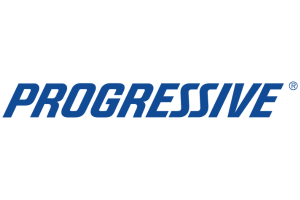How much is health insurance for a 39 year-old male?
Are you a 39-year-old male wondering about health insurance costs? Discover the factors that determine how much health insurance may cost for you in this informative article.
Secured with SHA-256 Encryption






Find the Lowest Car Insurance Rates Today
Quote’s drivers have found rates as low as $42/month in the last few days!




Table of Contents
Table of Contents


Insurance Content Managing Editor
Daniel S. Young began his professional career as chief editor of The Chanticleer, a Jacksonville State University newspaper. He also contributed to The Anniston Star, a local newspaper in Alabama. Daniel holds a BA in Communication and is pursuing an MA in Journalism & Media Studies at the University of Alabama. With a strong desire to help others protect their investments, Daniel has writt...
Daniel S. Young


Licensed Insurance Producer
Dani Best has been a licensed insurance producer for nearly 10 years. Dani began her insurance career in a sales role with State Farm in 2014. During her time in sales, she graduated with her Bachelors in Psychology from Capella University and is currently earning her Masters in Marriage and Family Therapy. Since 2014, Dani has held and maintains licenses in Life, Disability, Property, and Casualt...
Dani Best
Updated January 2025
In today’s world, health insurance has become an essential part of our lives. It provides financial security and peace of mind in the event of unexpected medical expenses. However, with the wide range of health insurance plans available, it can be overwhelming to navigate through the options, particularly for a specific demographic such as a 39-year-old male. In this article, we will explore the key factors that influence health insurance costs for a 39-year-old male, as well as how lifestyle choices, pre-existing conditions, and location can impact these costs.
Understanding Health Insurance Costs
Before delving into the specifics of health insurance costs for a 39-year-old male, it is important to grasp the basics of health insurance. Health insurance consists of monthly premiums, deductibles, and out-of-pocket costs. These components collectively determine the overall cost of a health insurance plan.
The Basics of Health Insurance
Typically, health insurance plans require policyholders to pay a monthly premium. This premium is a fixed amount that must be paid regularly to maintain coverage. It serves as a financial commitment to ensure access to healthcare services when needed. The amount of the premium can vary based on several factors, including the level of coverage chosen, the insurance provider, and the individual’s age and health status.
In addition to the premium, policyholders are usually responsible for out-of-pocket costs. These costs include co-pays, co-insurance, and deductibles. Co-pays are fixed amounts that policyholders pay for specific services, such as doctor visits or prescription medications. Co-insurance refers to the percentage of the healthcare costs that the policyholder is responsible for paying after the deductible has been met. Deductibles, on the other hand, are the amount of money that policyholders must pay out of pocket before the insurance coverage kicks in.
Understanding these basic terms and concepts is essential for individuals to make informed decisions about their health insurance plans. It allows them to evaluate the costs and benefits associated with different options and choose the plan that best suits their needs and budget.
Factors Affecting Health Insurance Costs
The cost of health insurance for a 39-year-old male is influenced by several key factors. These factors play a crucial role in determining the premium rates and overall affordability of a health insurance plan.
Age is one of the primary factors that affect health insurance costs. Generally, younger individuals tend to have lower premiums compared to older individuals, as they are considered to be at a lower risk for developing health issues. However, as individuals age, the risk of developing certain medical conditions increases, resulting in higher premiums.
Geographical location is another factor that impacts health insurance costs. The cost of healthcare can vary significantly from one region to another. Factors such as local market competition, healthcare provider networks, and the cost of living in a particular area can influence the premiums charged by insurance companies.
The type of health insurance plan chosen also affects the cost. There are various types of plans available, including Health Maintenance Organizations (HMOs), Preferred Provider Organizations (PPOs), and Exclusive Provider Organizations (EPOs). Each plan type has its own cost structure and network of healthcare providers, which can impact the premiums.
Tobacco usage is an important factor considered by insurance companies when determining health insurance costs. Tobacco use is associated with a higher risk of developing various health conditions, such as heart disease, lung cancer, and respiratory problems. As a result, individuals who use tobacco products may have higher premiums compared to non-smokers.
Finally, an individual’s overall health status can also influence health insurance costs. Insurance companies may take into account pre-existing conditions, such as diabetes, hypertension, or obesity, when calculating premiums. Individuals with pre-existing conditions may face higher premiums or exclusions from coverage for certain conditions.
Understanding the factors that affect health insurance costs is essential for individuals to make informed decisions about their coverage. By considering these factors and comparing different plans, individuals can find the most suitable and affordable health insurance options.
Free Health Insurance Comparison
Compare Quotes From Top Companies and Save
Secured with SHA-256 Encryption
Average Cost of Health Insurance for a 39-Year-Old Male
Now that we understand the fundamentals of health insurance costs, let’s explore the average expenses associated with health insurance for a 39-year-old male.
Health insurance is a critical aspect of financial planning for individuals, providing protection against unexpected medical expenses. The cost of health insurance can vary significantly depending on various factors, including age, location, plan type, and individual circumstances.
Monthly Premiums
The monthly premium for a health insurance plan is a crucial consideration. On average, 39-year-old males can expect to pay around $400 to $600 per month for health insurance coverage. However, it’s important to note that this figure can vary based on geographical location, plan type, and individual circumstances.
Geographical location plays a significant role in determining health insurance premiums. For example, individuals living in areas with higher healthcare costs may face higher monthly premiums compared to those residing in regions with lower healthcare expenses. Additionally, the type of health insurance plan chosen, such as a preferred provider organization (PPO) or a health maintenance organization (HMO), can impact the monthly premium amount.
Furthermore, individual circumstances, such as pre-existing medical conditions, can also influence the cost of health insurance. Individuals with pre-existing conditions may be subject to higher premiums due to the increased risk they pose to insurance providers.
Deductibles and Out-of-Pocket Costs
In addition to the monthly premium, it’s essential to consider deductibles and out-of-pocket costs. A deductible is the amount a policyholder must pay out-of-pocket before the insurance coverage begins. For a 39-year-old male, an average deductible may range from $1,000 to $3,000 per year.
When choosing a health insurance plan, it’s crucial to strike a balance between the monthly premium and the deductible. Plans with lower monthly premiums often have higher deductibles, while plans with higher monthly premiums usually come with lower deductibles. It’s important to assess personal healthcare needs and financial capabilities to determine the most suitable option.
Out-of-pocket costs, such as co-pays and co-insurance, are additional expenses incurred when accessing healthcare services. Co-pays are fixed amounts paid for specific services, such as doctor visits or prescription medications, while co-insurance refers to the percentage of the total cost that the policyholder is responsible for paying.
Understanding the details of deductibles and out-of-pocket costs is crucial for budgeting and managing healthcare expenses effectively. By carefully reviewing the terms and conditions of a health insurance plan, individuals can make informed decisions that align with their financial goals and healthcare needs.
How Lifestyle Affects Health Insurance Costs
When it comes to health insurance, lifestyle choices can have a significant impact on costs. Let’s explore the influence of lifestyle factors on health insurance expenses for a 39-year-old male.
Health insurance costs are not solely determined by age and gender. Insurance companies take into account various lifestyle factors that can affect an individual’s overall health and well-being. These factors include smoking, alcohol consumption, physical activity, and diet.
Impact of Smoking and Alcohol
Smoking and alcohol consumption are two factors that can substantially increase health insurance costs. Insurance companies consider these habits as potential risk factors for various health conditions such as lung cancer, heart disease, liver damage, and addiction.
Individuals who smoke or consume alcohol excessively are more likely to require medical treatment and interventions, leading to higher healthcare expenses. Consequently, insurers often charge higher premiums to individuals who engage in these habits.
Furthermore, smoking and excessive alcohol consumption can also lead to a higher likelihood of accidents and injuries, which may require emergency medical care. This further adds to the overall healthcare costs and subsequently affects insurance premiums.
Effect of Physical Activity and Diet
On the other hand, maintaining an active lifestyle and a balanced diet can potentially lower health insurance costs. Regular exercise and a healthy diet can reduce the likelihood of developing chronic conditions such as obesity, diabetes, and hypertension.
Insurance companies view individuals who prioritize their health and engage in regular physical activity as lower risks. These individuals are less likely to require extensive medical interventions, resulting in lower healthcare costs.
Similarly, a balanced diet that includes a variety of fruits, vegetables, whole grains, and lean proteins can contribute to overall well-being and reduce the risk of developing chronic diseases. By adopting a healthy eating pattern, individuals can potentially lower their health insurance premiums.
Moreover, regular exercise and a healthy diet can also improve mental health, reduce stress levels, and enhance overall quality of life. Insurance companies recognize the positive impact of these lifestyle choices and may offer incentives or discounts to policyholders who actively engage in healthy behaviors.
It is important to note that lifestyle factors are just one aspect considered by insurance companies when determining health insurance costs. Other factors such as pre-existing conditions, family medical history, and geographic location also play a role in premium calculations.
By making conscious choices to prioritize health and well-being, individuals can not only improve their quality of life but also potentially reduce their health insurance expenses in the long run.
How Pre-existing Conditions Affect Health Insurance Costs
Pre-existing conditions can significantly impact health insurance costs for individuals, and 39-year-old males are no exception. It’s crucial to understand the potential repercussions of having a pre-existing condition on health insurance expenses.
When it comes to health insurance, pre-existing conditions refer to medical conditions that individuals have before obtaining health insurance coverage. These conditions can range from minor ailments to chronic illnesses that require ongoing treatment and management. For 39-year-old males, some common pre-existing conditions include high blood pressure, diabetes, asthma, and heart disease.
Having a pre-existing condition can lead to higher insurance premiums due to the perceived increased risk associated with these conditions. Insurance companies assess the health history of applicants to determine their costs. They delve into various factors such as medical records, previous hospitalizations, surgeries, and ongoing conditions. This detailed evaluation helps insurers gauge the potential financial burden that an individual’s pre-existing condition may pose.
For instance, if a 39-year-old male has a history of high blood pressure, insurance companies may consider the potential risks associated with this condition. They might take into account the likelihood of the individual requiring medication, regular check-ups, or even emergency medical care. All these factors contribute to the overall cost of insuring someone with a pre-existing condition.
Insurance companies use this information to adjust the premium amount accordingly. Individuals with pre-existing conditions may face higher monthly premiums compared to those without any health issues. This is because insurance companies need to account for the potential expenses related to the pre-existing condition when calculating the cost of coverage.
It’s important to note that health insurance costs can vary significantly depending on the severity of the pre-existing condition and the insurance provider’s policies. Some insurance companies may offer coverage at a higher cost but with more comprehensive benefits, while others may have more affordable options with limited coverage for pre-existing conditions.
While having a pre-existing condition can impact health insurance costs, it’s essential to explore all available options before making a decision. Some insurance providers offer specialized plans designed to cater to individuals with pre-existing conditions, ensuring that they receive the necessary coverage without exorbitant costs. Understanding the intricacies of health insurance and how pre-existing conditions affect costs is crucial for individuals to make informed decisions about their healthcare coverage.
Free Health Insurance Comparison
Compare Quotes From Top Companies and Save
Secured with SHA-256 Encryption
How Location Affects Health Insurance Costs
Lastly, it’s important to recognize how geographical location can influence health insurance costs for a 39-year-old male.
Cost Differences by State
Health insurance costs can vary significantly from state to state due to differences in healthcare infrastructure, demand for services, and local regulations. For example, states with a higher cost of living typically have higher health insurance premiums.
Urban vs. Rural Health Insurance Costs
Location within a state also plays a role in health insurance costs. Urban areas often have more healthcare options and increased competition among providers, which can lead to lower premiums compared to rural areas that may have limited healthcare resources.
In conclusion, understanding the factors that influence health insurance costs for a 39-year-old male is essential. By considering factors such as age, lifestyle choices, pre-existing conditions, and location, individuals can make informed decisions when selecting a health insurance plan. Remember, when it comes to health insurance, it’s crucial to find the right balance between affordability and comprehensive coverage to protect your well-being and financial stability.
Frequently Asked Questions
What factors affect the cost of health insurance for a 39-year-old male?
The cost of health insurance for a 39-year-old male can be influenced by several factors, including location, type of plan, coverage level, deductible amount, and any pre-existing conditions.
How can I find out the specific cost of health insurance for a 39-year-old male?
The specific cost of health insurance for a 39-year-old male can vary greatly depending on individual circumstances. It is best to obtain quotes from different insurance providers or use online tools that allow you to compare plans based on your specific needs.
Are there any discounts or subsidies available for health insurance premiums?
Yes, there are often discounts or subsidies available for health insurance premiums. Depending on your income level and eligibility, you may qualify for government subsidies or tax credits to help reduce the cost of your health insurance.
Can a 39-year-old male with pre-existing conditions still get health insurance?
Yes, a 39-year-old male with pre-existing conditions can still get health insurance. Under the Affordable Care Act, insurance companies cannot deny coverage or charge higher premiums based on pre-existing conditions. However, the cost of the insurance may vary based on the specific condition and the state in which you reside.
What are the different types of health insurance plans available for a 39-year-old male?
There are various types of health insurance plans available for a 39-year-old male, including HMO (Health Maintenance Organization), PPO (Preferred Provider Organization), EPO (Exclusive Provider Organization), and POS (Point of Service) plans. Each plan has different networks, costs, and coverage options, so it’s important to research and compare them to find the one that suits your needs.
Get a FREE Quote in Minutes
Insurance rates change constantly — we help you stay ahead by making it easy to compare top options and save.


